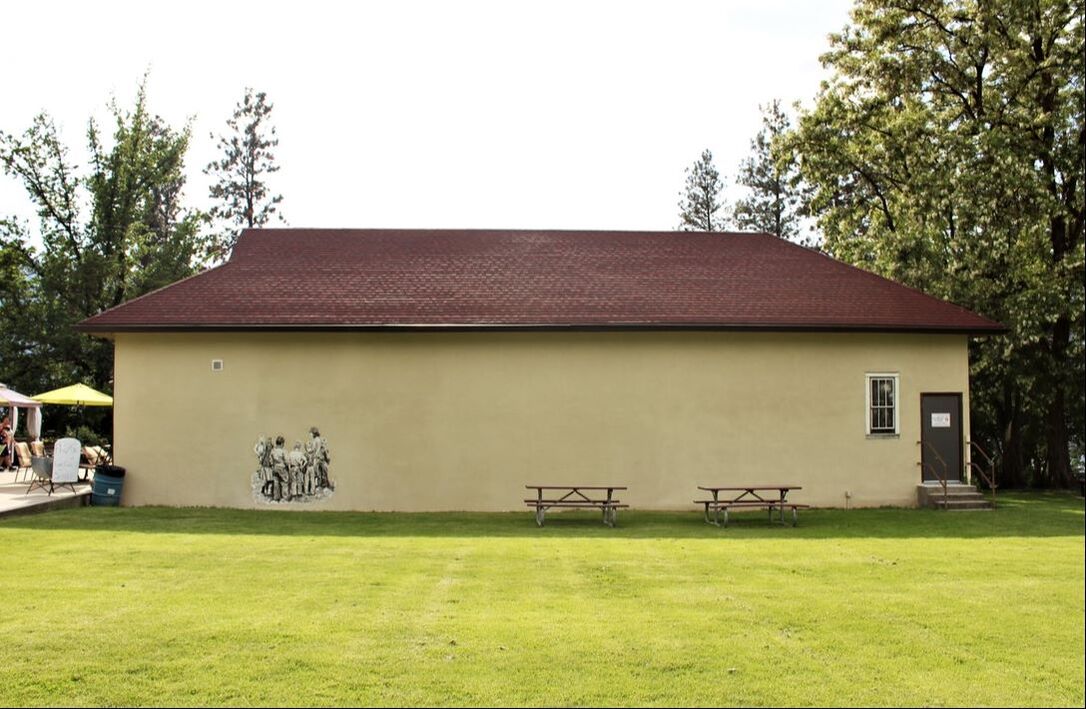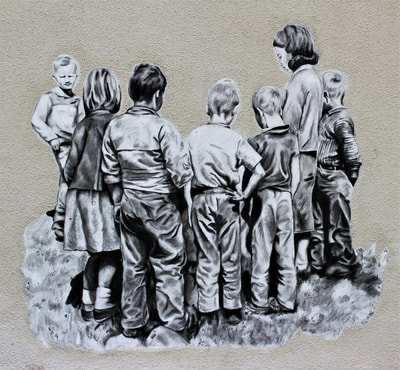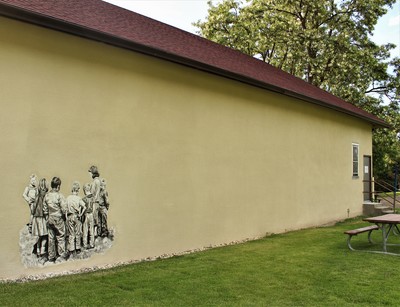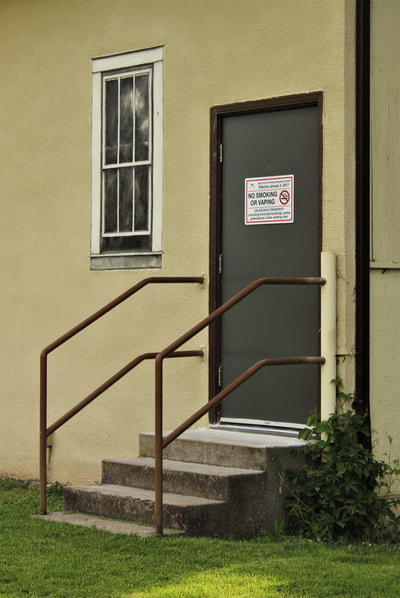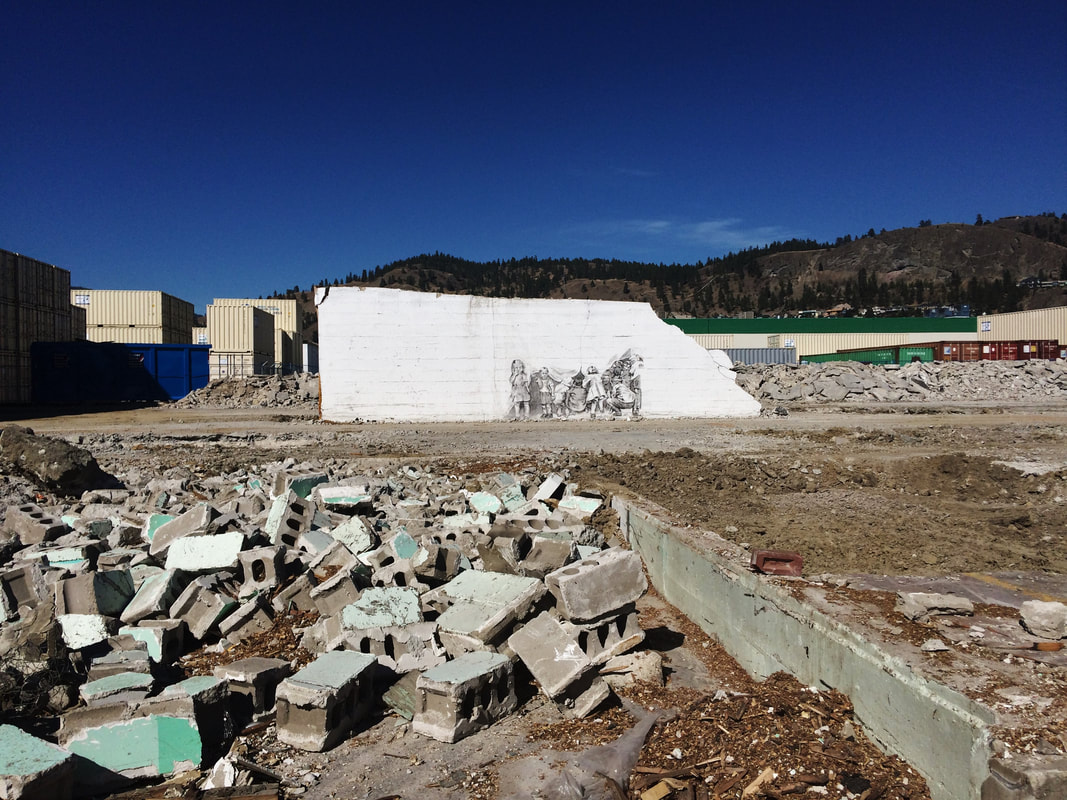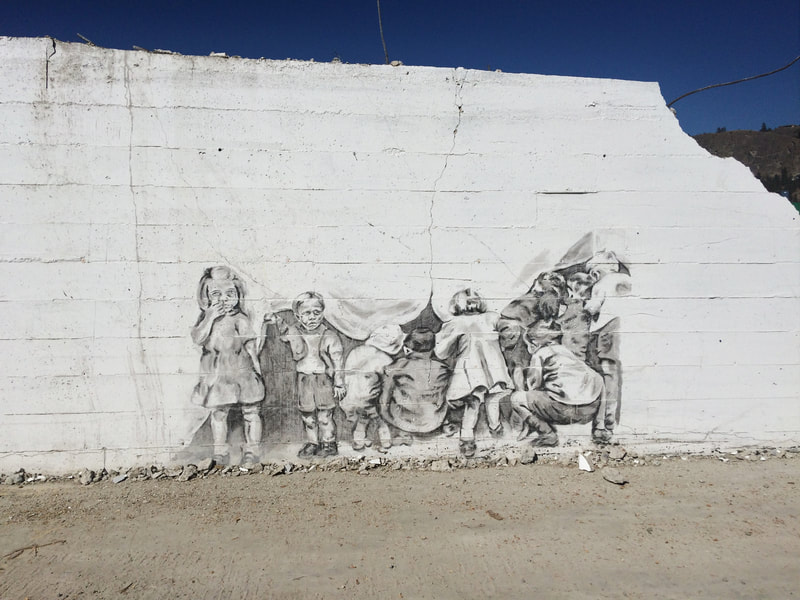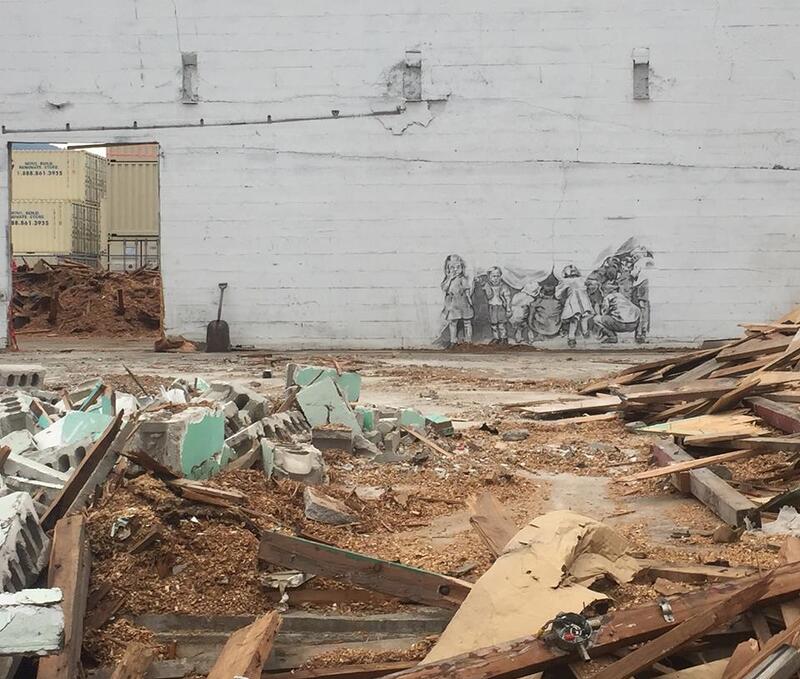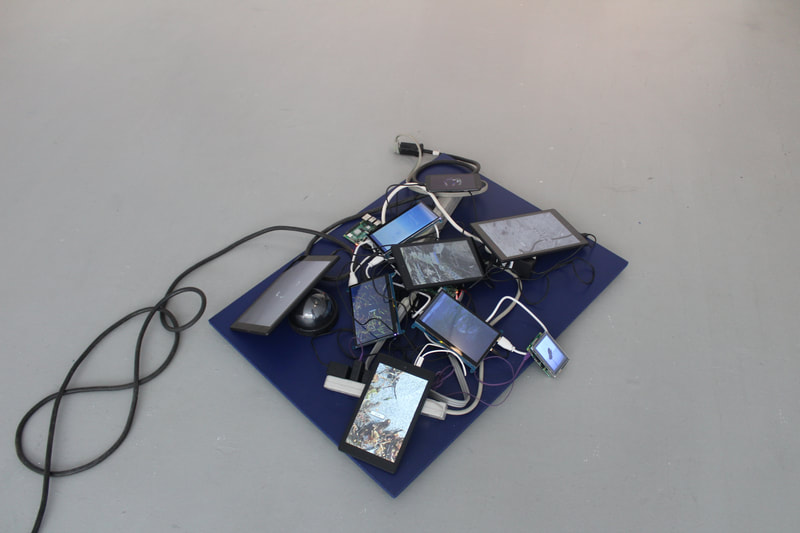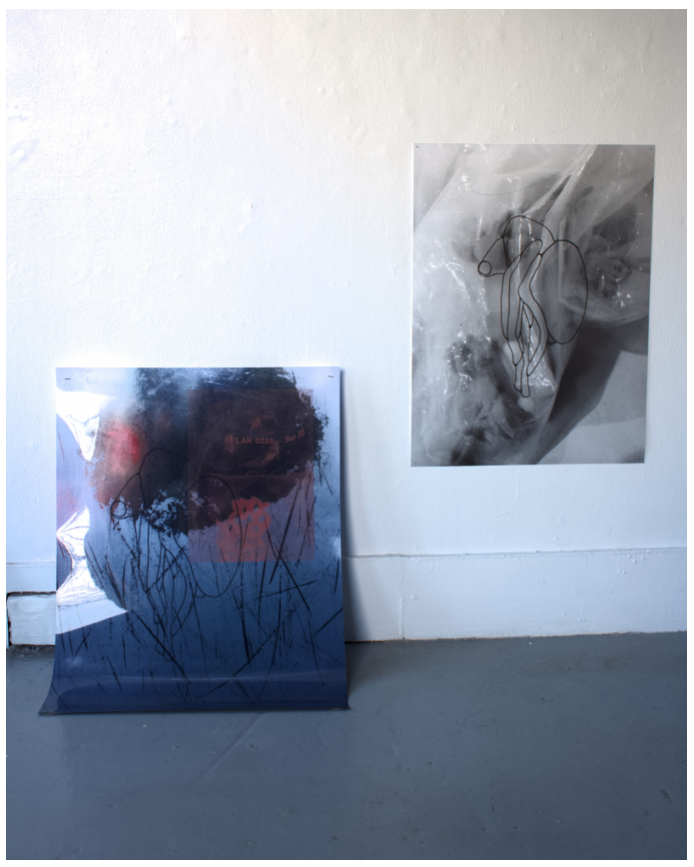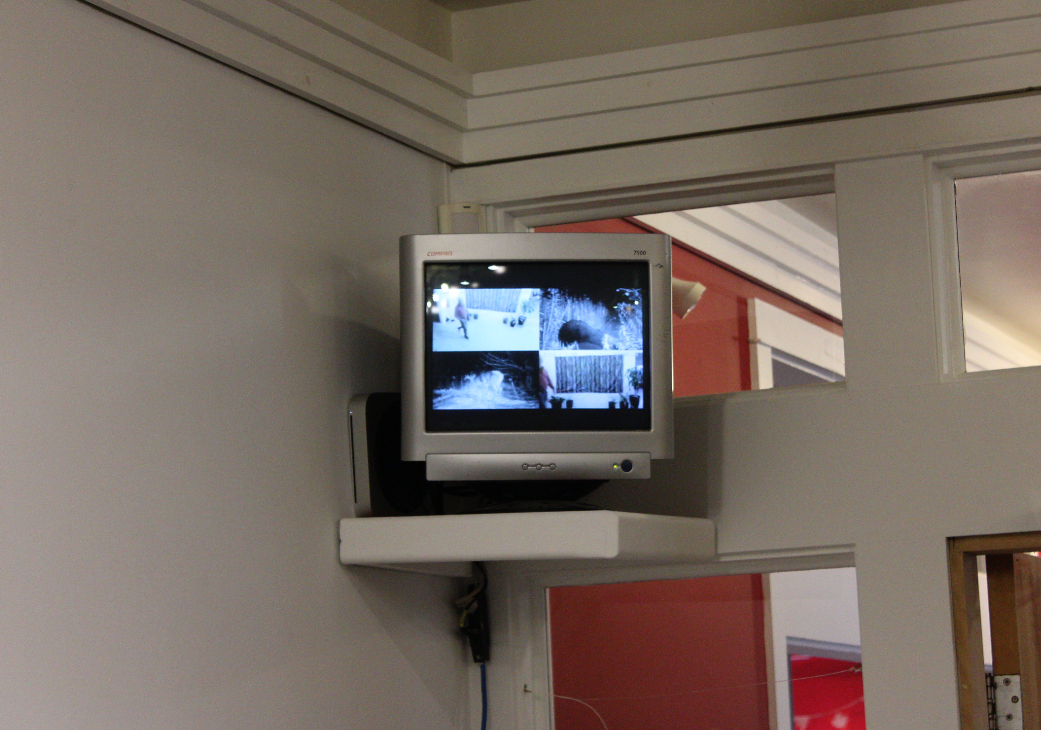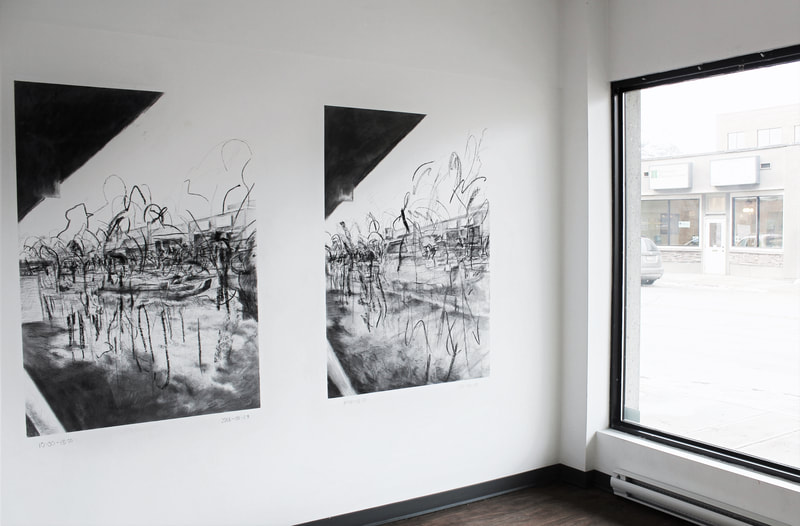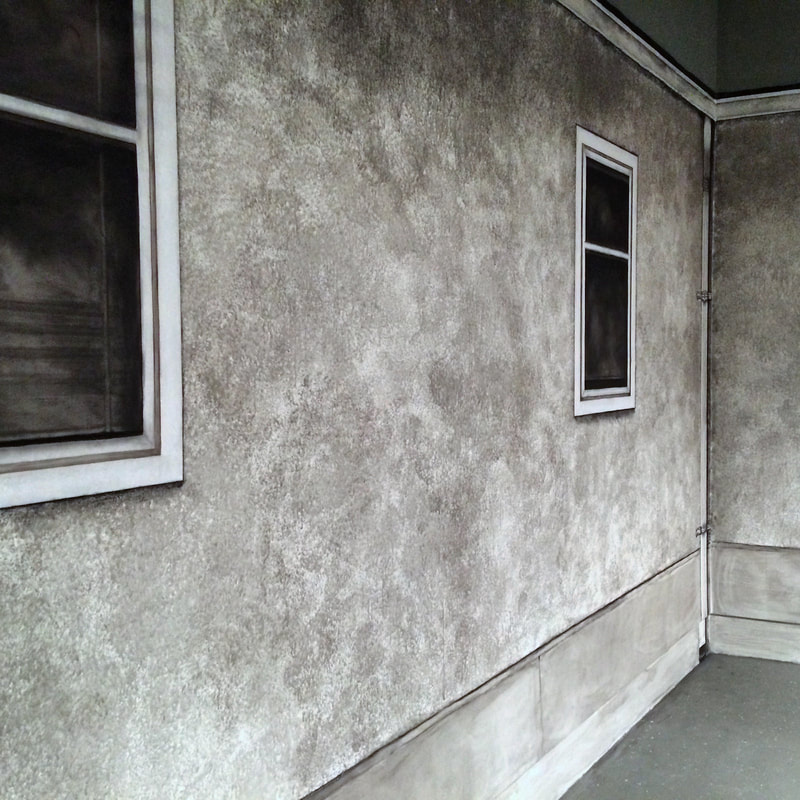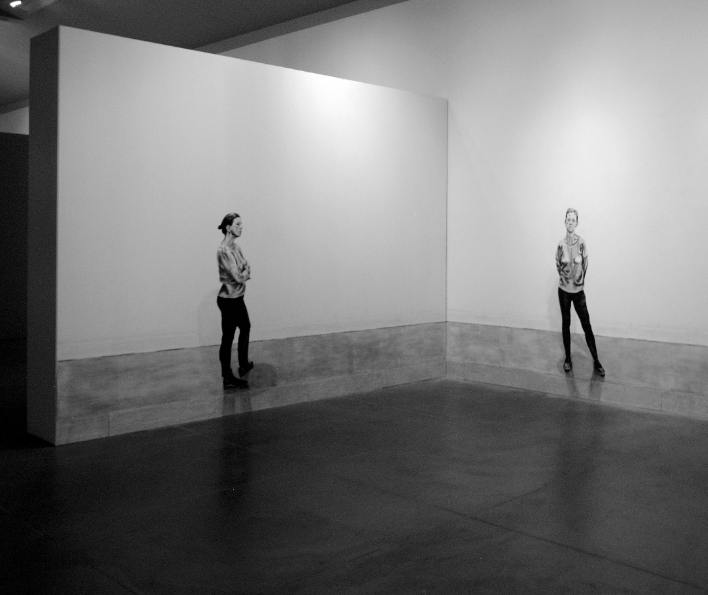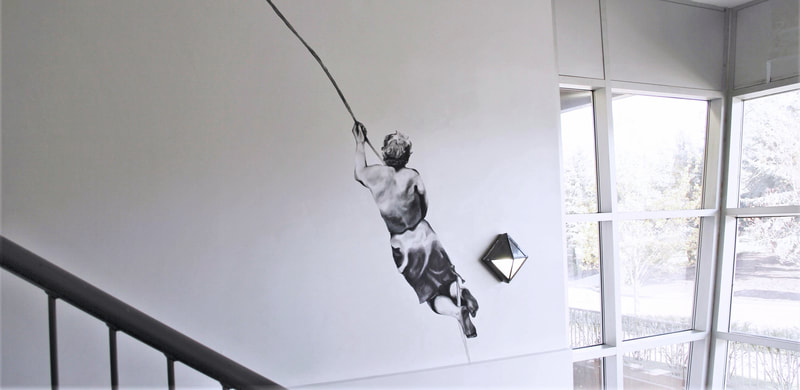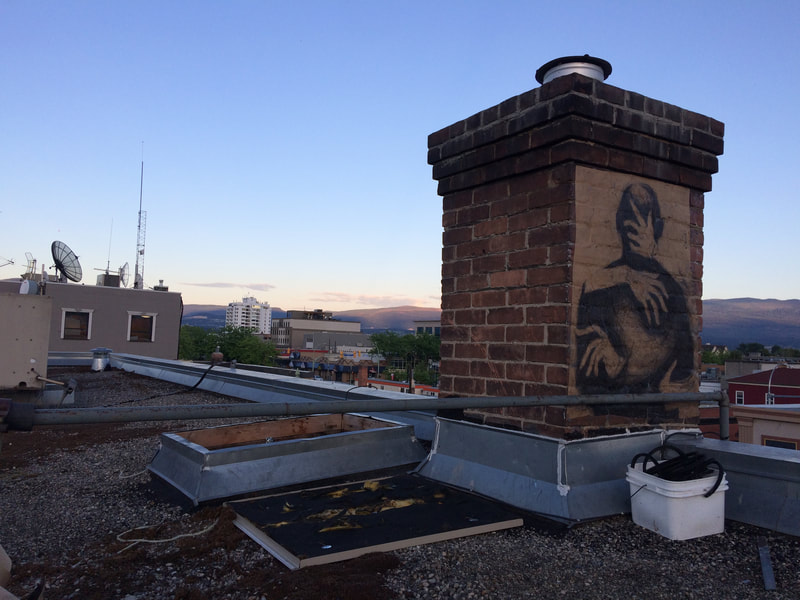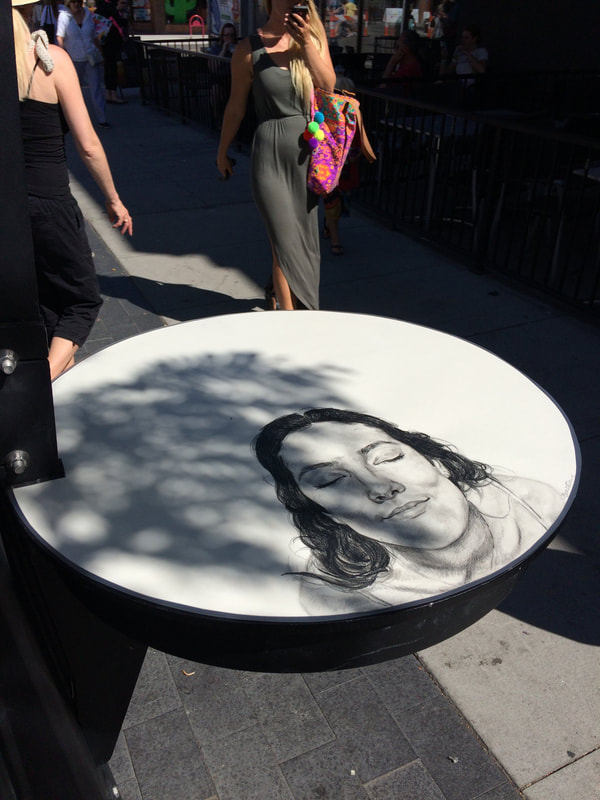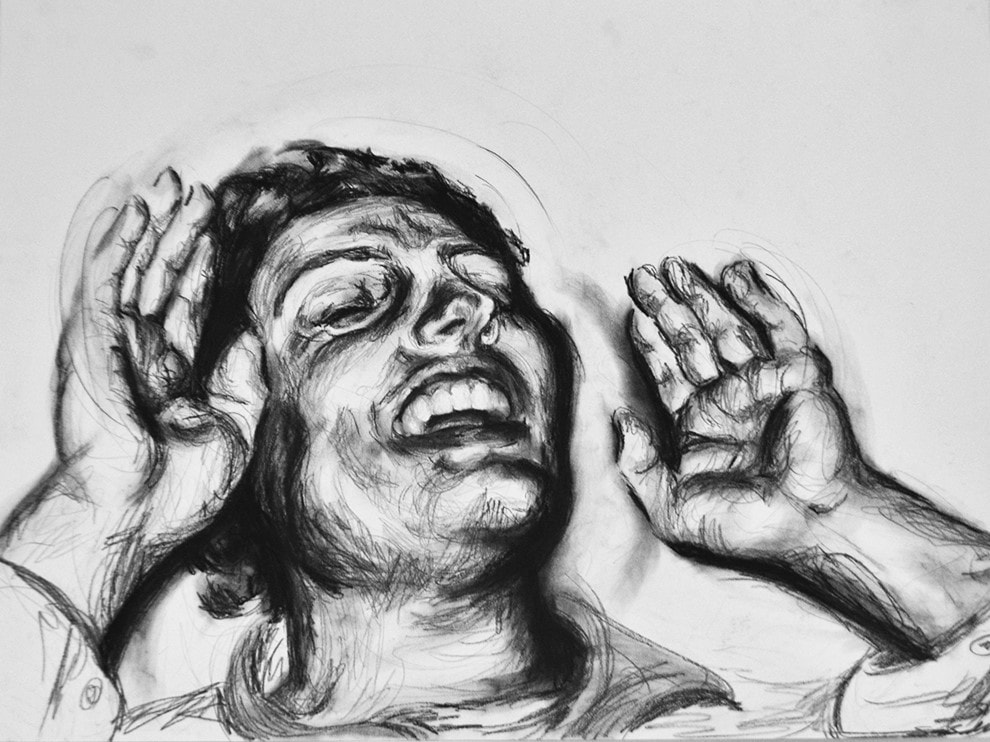A house can represent many things; shelter, privacy, domestic life, status, community, urban development, identity, aging, security, and violence. Portrait of my Neighbour II draws into question these roles, specifically identity and privacy.
Through this installation, I explore the idea of neighbourhoods, where every house means something different to its occupant and yet it remains private. How can private spaces exist so close to each other without intersecting? Neighbouring households, in attempt to remain private, keep their windows covered and the identity of the occupant concealed. This image becomes the occupant’s portrait. Additionally, because this is all that is seen, the house itself is personified.
Foucault’s theories of knowledge and power specifically regarding the Panopticon, can be applied. Where the capability of being watched by your neighbour translates into the possibility of being under constant surveillance and introduces the prospect of power among neighbours.
Through this installation, I explore the idea of neighbourhoods, where every house means something different to its occupant and yet it remains private. How can private spaces exist so close to each other without intersecting? Neighbouring households, in attempt to remain private, keep their windows covered and the identity of the occupant concealed. This image becomes the occupant’s portrait. Additionally, because this is all that is seen, the house itself is personified.
Foucault’s theories of knowledge and power specifically regarding the Panopticon, can be applied. Where the capability of being watched by your neighbour translates into the possibility of being under constant surveillance and introduces the prospect of power among neighbours.
